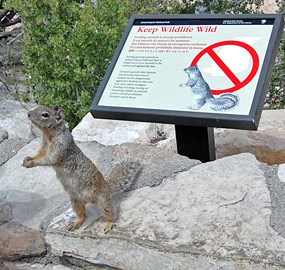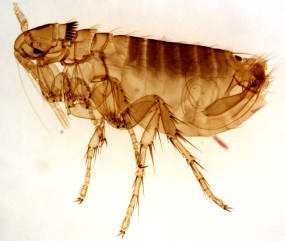|
Grand Canyon National Park is an area of astonishing natural beauty, a place where people can experience solitude and natural landscapes, and a vibrant ecosystem of diverse plants and wildlife species. As is true for all wild places, natural hazards are an inherent part of the Grand Canyon landscape. 
Humans may also be exposed to these diseases through animal droppings, via fleas or ticks that their pets contracted from infected wildlife, and by handling dead animals. Sick animals may behave especially unpredictably, and may even act aggressively towards or bite humans. Given the serious nature of many of the diseases that wildlife species may carry, everyone who visits or lives in the Grand Canyon region needs to be aware of the diseases, how to protect themselves against exposure to these infectious agents, and the importance of seeking medical care immediately if they suspect that they may have been exposed to them. Many zoonotic diseases have flu-like symptoms, including fever, headache, and chills. When you suspect that may have been exposed to a zoonotic disease and are seeking medical care, it is essential that you tell your physician that you may have been exposed to infectious agents carried by wildlife or their parasites. Zoonotic diseases are infectious diseases that can be transmitted between animals and humans. Wildlife species in and around Grand Canyon National Park may carry a wide variety of such diseases, including, but not limited to, plague, Hantavirus, rabies, and tick-borne relapsing fever, which has been documented only on the North Rim. 
One of the most important things you can do to protect yourself from contracting any zoonotic disease is to: NEVER HANDLE OR TOUCH SICK OR DEAD ANIMALS
Related InformationGrand Canyon Wildlife: Viewing and Safety TipsThe Centers for Disease Control and Prevention (CDC) Plague Hantavirus Rabies Tick-borne Relapsing Fever Additional information about other zoonotic diseases may be found on the CDC website (https://www.cdc.gov) by using the search function. |
Last updated: September 24, 2018
